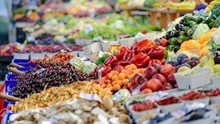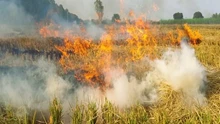
Emerging economies have significantly influenced global agricultural market trends over the past 20 years and are anticipated to continue doing so in the coming decade. This projection is detailed in a new report by the Food and Agriculture Organization of the United Nations (FAO) and the Organisation for Economic Co-operation and Development (OECD).
The OECD-FAO Agricultural Outlook 2024-2033, marking its 20th edition, serves as a crucial reference for medium-term agricultural commodity market forecasts. The report examines demographic and economic trends affecting agricultural supply and demand, predicts shifts in production and consumption, and assesses changes in international trade patterns.
A significant shift anticipated over the next decade is the rising influence of India, Southeast Asia, and Sub-Saharan Africa, alongside a diminishing role for China. China, which contributed 28% to global agricultural and fisheries consumption growth in the past decade, is expected to see its share drop to 11%. This decline is attributed to a decreasing population, slower income growth, and stabilizing nutritional habits.
Conversely, India and Southeast Asian nations are projected to contribute 31% to global consumption growth by 2033, driven by urbanization and increasing affluence. Sub-Saharan Africa is expected to add 18% to global consumption, primarily due to population growth.
Consumption and Production Projections
Total consumption of agricultural and fisheries products, including food, feed, fuel, and industrial raw materials, is projected to grow by 1.1% annually over the next decade. This growth will mainly occur in low- and middle-income countries. Middle-income countries are expected to see a 7% increase in food calorie intake, largely from staples, livestock products, and fats. Low-income countries will experience a 4% rise in calorie intake, insufficient to meet the Sustainable Development Goal of zero hunger by 2030.
FAO Director-General QU Dongyu emphasized the need for strategies to bridge productivity gaps in low- and middle-income countries to enhance domestic production and increase farmers’ incomes.
Productivity and Emissions
Crop production growth is expected to result from productivity improvements on existing land rather than expanding cultivated areas, reducing agriculture's global greenhouse gas (GHG) emissions intensity. Similarly, productivity gains will drive growth in livestock and fish production, though herd expansions will also contribute. Consequently, direct agricultural emissions are projected to increase by 5% over the next decade.
Despite anticipated productivity improvements, significant gaps are expected to persist, particularly in Africa and Asia. These disparities, caused by technological gaps, limited input use, and climatic conditions, will challenge farm incomes and food security, increasing reliance on food imports.
Well-functioning international agricultural commodity markets will remain crucial for global food security, with 20% of calories traded globally. The peaks in international agricultural prices seen in 2022 are subsiding, and real international reference prices for major commodities are projected to decline slightly over the next decade. However, this trend may not be reflected in local retail food prices.
This year's Outlook includes a scenario analyzing the impact of cutting food losses along supply chains and reducing food waste by 2030. This scenario suggests a potential 4% reduction in global agricultural GHG emissions by 2030. Additionally, it projects lower food prices, leading to a 10% increase in food intake in low-income countries and a 6% increase in lower-middle-income countries. This could reduce the number of undernourished people by 153 million (26%) by 2030. However, the scenario also highlights potential challenges for producers, as lower prices and reduced production could impact their livelihoods.
Commodity Projections
The Outlook provides decadal projections for various commodities, including cereals, oilseeds, meat, fish, dairy products, and biofuels. Key highlights include:
-
Cereals: Food use will continue to drive demand, followed closely by feed use. By 2033, 41% of all cereals will be consumed directly by humans, 36% will be used as animal feed, and the rest will go into biofuels and industrial products.
-
Oilseeds: Yield challenges will persist, particularly for major producers like Indonesia and Malaysia (palm oil) and the EU and Canada (rapeseed).
-
Meat: Poultry will dominate growth due to its affordability and nutritional benefits, accounting for 43% of total meat protein consumed by 2033.
-
Milk: Global production is projected to grow by 1.6% annually, with most growth in India and Pakistan.
-
Fish: Over 85% of additional fish production will come from aquaculture, increasing its share of global fish production to 55% by 2033.
The OECD-FAO Agricultural Outlook 2024-2033 highlights significant regional shifts and productivity improvements, highlighting the importance of addressing productivity gaps and ensuring well-functioning international markets to sustain global food security and agricultural development.
OECD-FAO Agricultural Outlook 2024-2033













